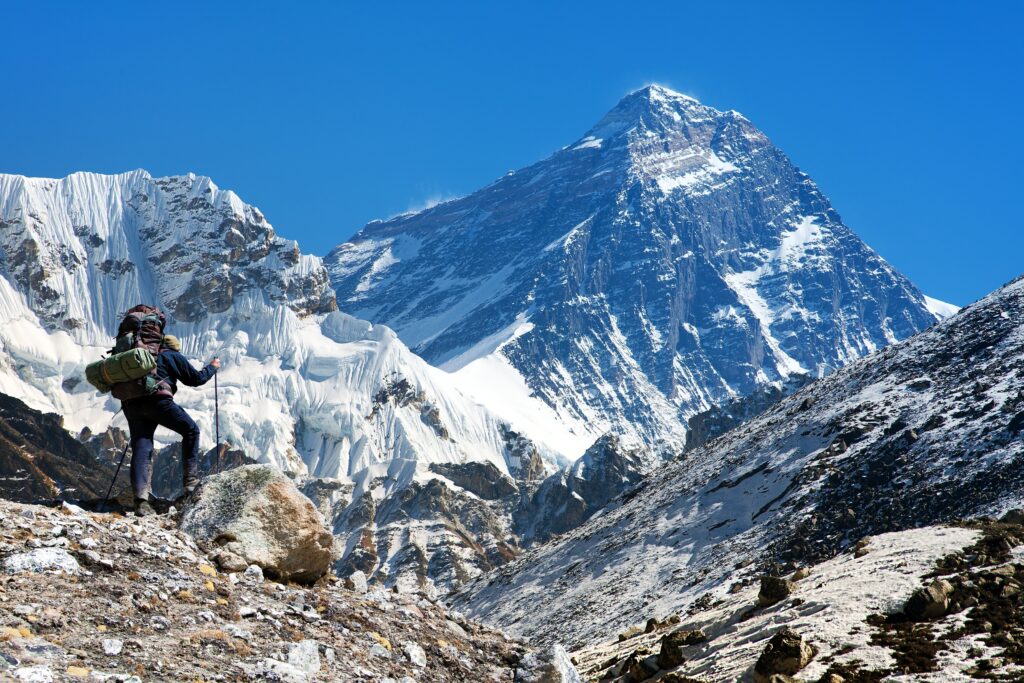A new expedition promises to guide climbers to Everest’s summit in just seven days. The team will skip traditional acclimatisation methods by using xenon gas, a technique that has sparked debate in mountaineering and medical circles. Austrian guide Lukas Furtenbach leads this ambitious venture. He aims to push the limits of speed and safety on Everest, but his plan has raised concerns.
A Historic Climb, Modern Speed
In 1953, Edmund Hillary and Tenzing Norgay took over two months to reach Everest’s summit. Their journey involved weeks of adjusting to the mountain’s altitude. They climbed slowly, moving up and down to acclimatise. Modern expeditions benefit from better logistics, like ropes set by Sherpas. However, most climbers still take about two months to summit.
A Bold Plan: One Week to the Summit
Furtenbach now offers a plan to summit Everest in just seven days. The trip involves flying to Kathmandu, then taking a helicopter to Base Camp. From there, climbers begin their ascent without acclimatising. This rapid route costs €150,000.
The key to this quick climb is xenon gas. Furtenbach believes it helps climbers adjust to high altitudes faster. Xenon stimulates the production of erythropoietin (EPO), a hormone that increases red blood cells. Red blood cells are crucial for carrying oxygen at high altitudes.
Understanding Xenon’s Role in Acclimatisation
Xenon boosts the body’s EPO production. EPO helps create red blood cells, vital for oxygen transport. Normally, climbers acclimatise by ascending and descending repeatedly. This allows their bodies to adjust. Furtenbach’s method skips this. He uses xenon to speed up the process.
Furtenbach has tested this method on previous climbs, claiming positive results. However, scientific evidence is still limited. Some experts, like Professor Andrew Peacock, question whether xenon produces enough red blood cells to make a difference in just seven days.
Safety Concerns: Xenon and Mountaineering
Furtenbach believes that reducing the time spent on Everest lowers the risks. Less time on the mountain means fewer chances for avalanches, illness, or bad weather. However, not everyone agrees with this approach.
The global mountaineering body UIAA has expressed concern. They warn that xenon could cause blood clots or strokes. There are also ethical issues. Some climbers think using xenon is unfair, as it is banned in sports. Others question whether performance enhancers should be allowed in mountaineering.
Medical and Ethical Divides in the Climbing Community
Some mountaineers, like Sherpa guide Dawa Steven, see potential in xenon. He believes it could protect Sherpas from high-altitude dangers. But many, like Adrian Ballinger, remain wary. Ballinger has guided climbers using altitude chambers, not drugs. He argues that performance enhancers have no place in mountaineering.
The Death Zone: Everest’s Extreme Altitude
As climbers ascend Everest, oxygen levels decrease. At 5,500 meters, oxygen is only half that at sea level. At the summit, it’s one-third. This can lead to hypoxia, where the body doesn’t get enough oxygen. Climbers may experience pulmonary and cerebral oedema, which can be fatal.
Using bottled oxygen helps climbers breathe easier at high altitudes. This practice has been common since Hillary and Norgay’s time. Some mountaineers believe that climbing without supplemental oxygen is more pure. However, most climbers still use oxygen to survive at Everest’s extreme heights.
Xenon’s Potential: Promise and Peril
Dr. Michael Fries, an anaesthesiologist in Germany, has studied xenon’s effects. He believes it could be useful for high-altitude climbers. However, experts remain cautious. Fries has seen xenon boost red blood cells, but research is still limited. Some doubt whether xenon can make a significant difference in just seven days.
Furtenbach plans to lead a group of climbers up Everest using xenon and bottled oxygen. He believes they are fit and ready. However, experts remain divided on whether this will work. Some are hopeful, while others remain skeptical.
Furtenbach’s bold plan could change the way we think about Everest expeditions. It may lead to the fastest summit yet, or it could fail to meet expectations. Either way, it will spark further debate about performance enhancers and the future of high-altitude climbing.
